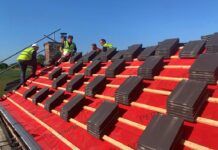A letter published on September 7, 2017, from the Department for Communities and Local Government, aims to draw attention to the need to properly assess design calculations for cladding systems, particularly for high-rise buildings and buildings in exposed locations. The letter is detailed below.
Subsequent to our previous circular letter of 13 July on considerations when designing cladding for tall buildings, this circular highlights key aspects in calculation and assessment of structural design calculations for building cladding systems. Inadequate calculations can result in cladding systems failing due to high wind-loads, potentially resulting in parts of the cladding system falling from the building.
On high-rise buildings in particular, this can give rise to life safety risks.
It is therefore important that Building Control Bodies and competent person scheme operators consider carefully how the necessary wind loadings have been factored into the structural design of cladding systems. The following can be important factors in the assessment of structural design by those responsible for designing and installing the system:
- The design system is demonstrated to be capable of resisting the calculated wind loading.
- Insulation to render bond strength is adequately considered in render systems.
- Design pull-through values are considered and used appropriately.
- Fixing numbers / pattern are correctly specified and defined.
- Design pull out value is correctly calculated at all levels of the building.
- The correct safety factors are applied as set out in relation to the specific system being used.
- The methodology for installation and design is clearly expressed.
- Sufficient detail of the building and its site context is available.
- Sufficient data is available to enable a detailed assessment to be carried out.
- Consideration is given to the need for a detailed site survey to be undertaken including specific pull out and / or adhesion tests.
- Wind pressures zones on the building are adequately described.
- Care is taken to avoid calculation errors resulting in over-engineering of the system (which can cause failure e.g. where pull out zones overlap).
Failure to properly take into account these factors can mean that the safety factors used during calculation and design to meet anticipated wind loads can be significantly eroded or, in some cases, reduced to zero. Where safety factors are marginalised, only a perfectly installed system will be likely to resist predictable peak wind loads.
This leads to an increased risk of render systems (or any type of cladding) delaminating or falling from the building. Debris falling from height could pose a substantial risk to life. Buildings over 15 storeys, and over 6 storeys in areas of high exposure are likely to be particularly vulnerable if design calculations are inadequate.
It is therefore particularly important that:
- Design calculations are undertaken by a competent designer in accordance with the guidance in Section 3 of Approved Document A (Structure).
- The structural design of cladding systems is rigorously checked by a suitably qualified person.
- The specific site conditions and nature of the building are fully understood and factored into calculations.
- Where necessary, site tests are undertaken to assess design pull out and adhesion strength underpinning design assumptions.
- There is adequate site inspection to ensure that the system is installed in line with the system design.



